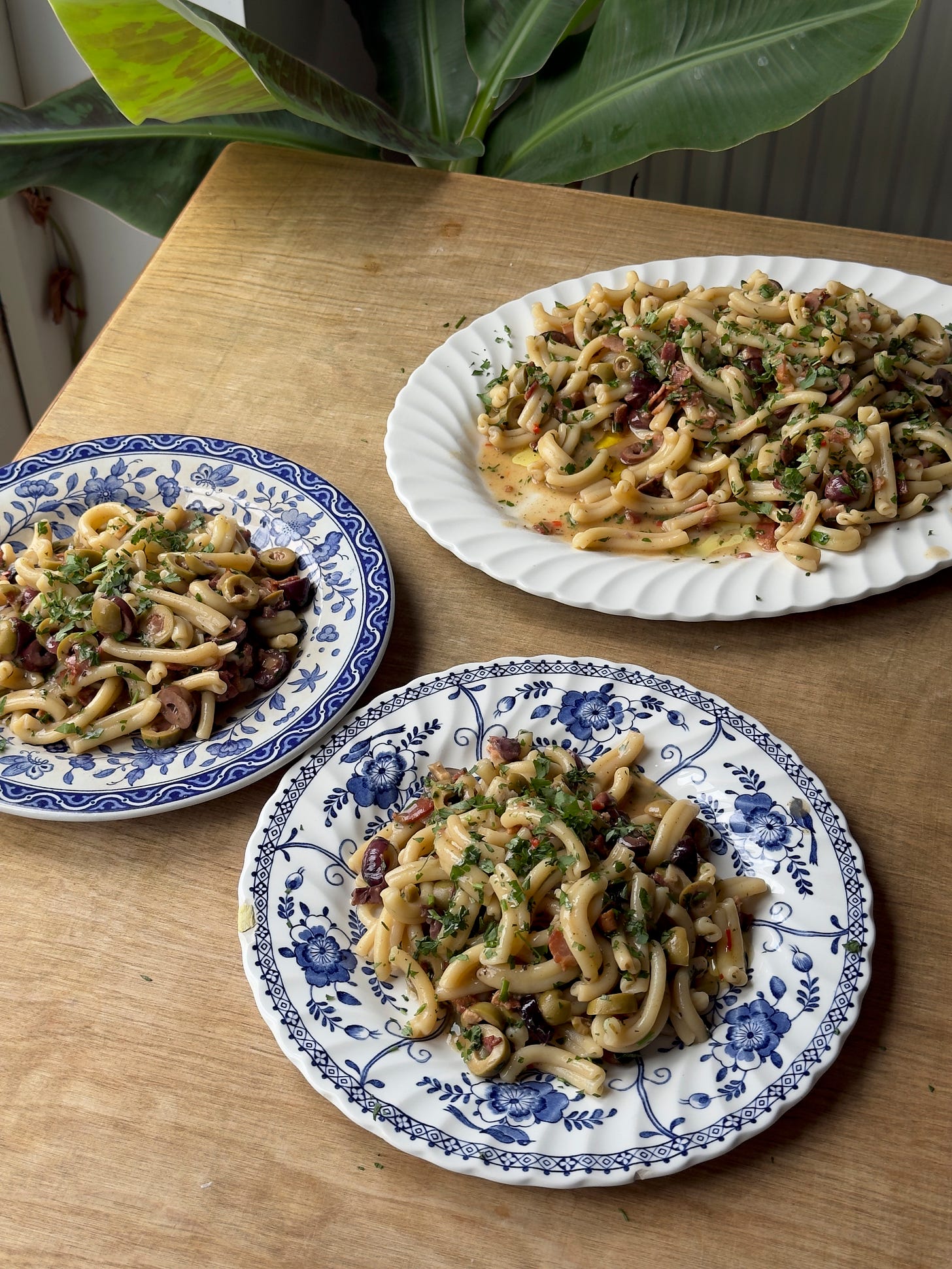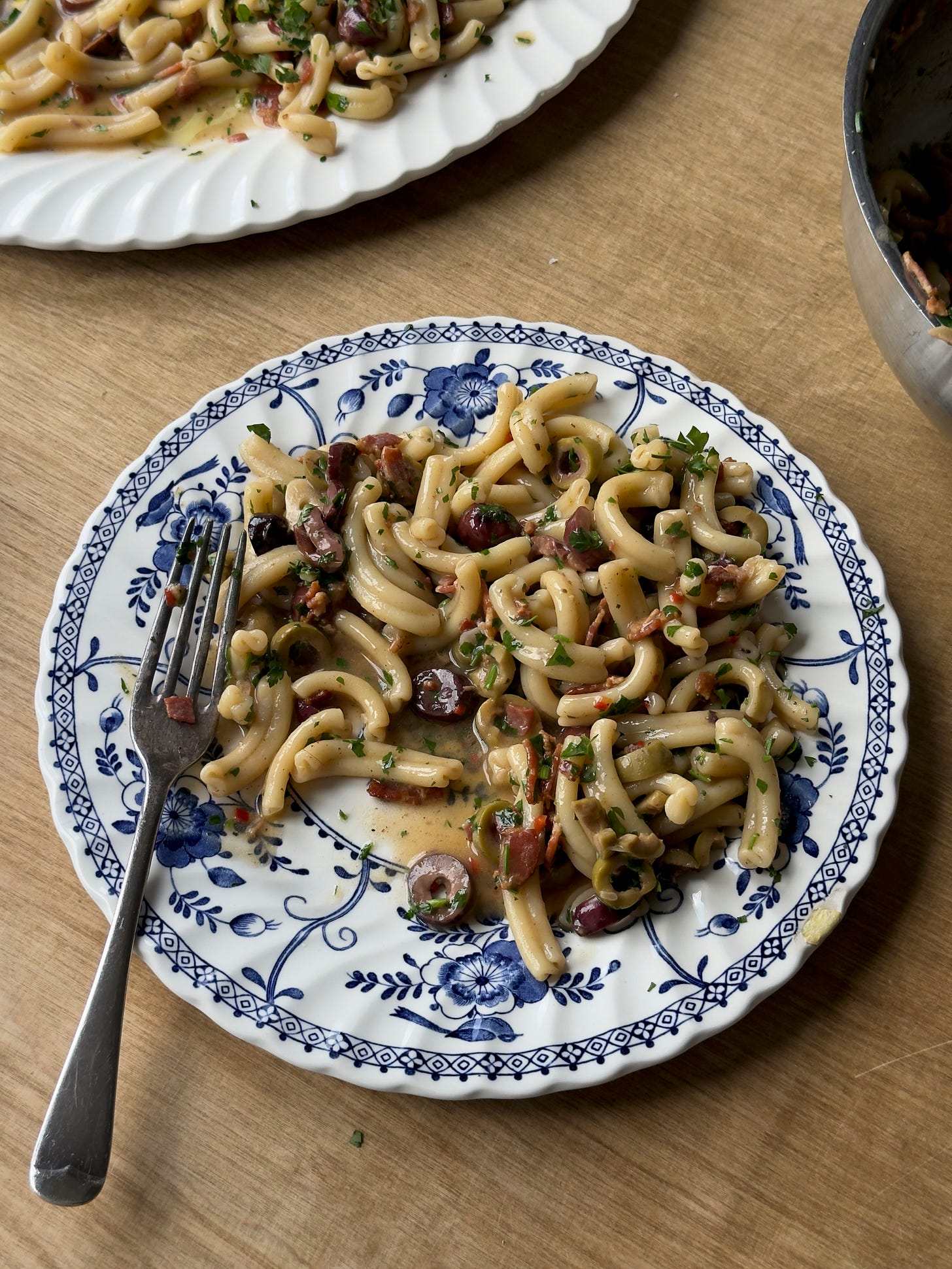More Please - Two Jars of Olives and a Pack of Bacon Pasta
A 15 Minute Dinner to solve all your problems, plus how I cook with Olives
I have married into a family that are, to put it mildly, olive obsessed. Watching them absolutely delete three 2kg Perello olive tins on the first day of a holiday, cursing that they didn’t buy 8kg instead of 6 is really something to behold. The kids are actually worse than the parents which I have nothing but admiration for, it took me YEARS to mature enough to get into olives. These kids love them more than most sweets.
I didn’t realise quite how much I also cook with olives until someone kindly wrote to me about how their child had actually been weaned on Dinner Party recipes and was now, at 3 years old, a happy anchovy, olive and garlic lover. Olives are, like anchovies and other brined/salty things, a flavour hack. Carrying both salty, savoury notes as well as briney and acidic, they can lift a dish from OK to Exceptional with minimal work. A well employed olive is better than just adding salt. It adds body, makes a dish richer and deeper in umami.
Which olive you use for cooking is important. Salted, wrinkly black olives for example are too strong and salty for most recipes and will ruin a delicate dish. You always want to strike a balance in your cooking so if you’re adding olives it’s helpful to know what they might do to the finished product.
My most used olives in cooking are Kalamata, Nocellara, pitted green and pitted black and, when I can find them, Taggiasche. Apart from Kalamata I definitely trend toward Italian olives, no shade on all the other spectacular olives from the rest of the world though, it’s just what I know. I use the first two the most - Kalamata are sweet as well as sour and salty but can mellow really well when cooked. They add body without being distracting. I love them too for salads for their brightness and pop. Nocellara are a different beast entirely. They are rarely pitted, are brined but are super buttery in flavour rather than vinegary. They are great for a slower cook as well as in a salsa or garnish as they don’t overpower. I also love them in martinis. If you can’t face the idea of having to slice their cheeks off to cook sans pits, then a Gordal is a decent swap. Taggiasche are special little olives from Southern Italy, usually kept in oil but deceptively briney. They are THE best olives for Puttanesca but also for with bread and bitter Italian cocktails - if you can find them, buy ‘em.
Finally - the old faithful brand neutral pitted green and pitted black olives. These are my preferred “lazy” cooking olives, for when I can’t find/don’t need anything too chic. I always have some to hand, especially as my husband has a medical addiction to “pizza olives”. These are a good way to start experimenting with olives in cooking. They can be on the salty side, so definitely ease yourself in. I love using the black olives in slow cooks and the green olives for quick pan sauces and garnishes.
Today’s 15 Minute Dinner is a big crowd pleaser and so easy to put together. Bacon is the meat equivalent of an olive in many ways; it’s exceptionally easy to chuck in wherever you might need a boost of flavour. This pasta sauce was created around a pack of bacon and 2 pots of olives because that is all I had in the house at the time, apart from a few auxiliary aromatics. I have made it 3 or 4 times since and don’t show signs of stopping. I love how easy it is, how quickly it comes together while the pasta is cooking but tastes like it took a lot longer.
TWO JARS OF OLIVES AND A PACK OF BACON PASTA





